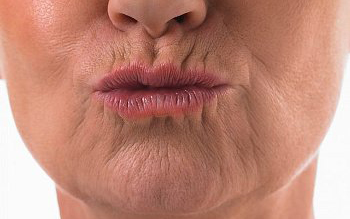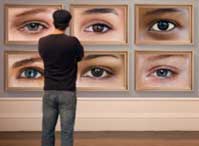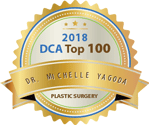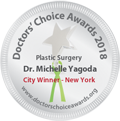 At some point in a woman’s life, she starts to notice that her lipstick doesn’t stay in place anymore and that it tends to end up in little vertical cracks around her lips.
At some point in a woman’s life, she starts to notice that her lipstick doesn’t stay in place anymore and that it tends to end up in little vertical cracks around her lips.
Smoking can accelerate the formation of these lip lines. Not only does smoking damage the skin by starving it of oxygen, but it harms the skin by increasing free radical damage (as does sun exposure). The repeated lip pursing from puffing causes lip wrinkles to form far more quickly than they would on a nonsmoker. In fact, these lip lines are sometimes called “smokers’ lines” even when they’re not caused by smoking.
The most obvious cause of most lip lines in both smokers and non-smokers is mechanical stress—simply using your lips repeatedly! The face is the only part of the body where muscles are attached directly to the overlying skin. Therefore, every time the muscle contracts, the skin moves with it. The more you use the muscle, the more the skin wrinkles. These wrinkles from mechanical stress, combined with the loss of fat in the upper lip associated with aging, cause lip lines, volume loss, flattening, and deflating. We also lose collagen and elastin in the skin itself, causing it to become thinner and more prone to wrinkling.
Any of the following can help to disguise lip lines and prevent more of them: anti-aging glycolic acids; anti-glycation and hyaluronic acid moisturizers; peptide and lipid nutritional supplements; broad-spectrum sunscreens: topical anti-oxidants; and a good lip pencil. However, if you want to actually get rid of them, you’ll need Dr. Yagoda’s help. Injectable fillers, dermabrasion, and chemical peels can all help to restore the look and feel of younger, fuller lips. In New York, NYC, and Manhattan Dr. Yagoda can help you decide which of these treatments, alone or in combination, might be best for you. Here’s a brief guide to all three:
Injectable fillers
By restoring volume to the lips, the skin surrounding them is stretched more tightly and appears less wrinkled. Think of a partially deflated balloon, and the effect that air or water entry has on the balloon’s surface. Now imagine it filled with air. Read more about lip augmentation.
Dermabrasion
Not to be confused with microdermabrasion, which is a much lighter and more superficial exfoliating treatment, dermabrasion uses mechanical energy to remove deeper imperfections in the skin, such as wrinkles and acne scars. The procedure is performed under local anesthesia and depending on the depth of the treatment, your skin will need time to heal before you can see the final results, which should last for several years.
Light Chemical Peels
Chemical peels remove the top layers of the epidermis, revealing fresher, smoother skin beneath. They can improve common skin conditions such as acne, enlarged pores, age spots, wrinkles and sun damage. They can also improve skin’s texture and tone. Glycolic acid peels are not all alike. The pH of the peel is much more important than the percentage. Aestheticians typically administer neutralized peels that are much less risky (and less effective) than lower pH, physician-administered peels. These effective chemical peels achieve their results by requiring a series of three to six “lunchtime” peels. They take only a few minutes, and there is no downtime.
Medium-to-Deep Chemical Peels
Like dermabrasion, medium-to-deep peels like TCA, phenol, ViPeel, and Jessner’s peel achieve more profound results by working in the deeper levels of the skin. As a result, they also carry a higher degree of risk and require more downtime than lighter, milder “lunchtime” peels. While dermabrasion uses mechanical energy, peels use chemical energy. Both stimulate the growth of collagen while replacing damaged, wrinkled skin. Medium-to-deep chemical peels remove deeper imperfections such as wrinkles, pigmentation deposits, and acne scars. They can tighten the skin and improve the overall color and texture. The procedure is performed under topical anesthesia, sometimes with IV sedation, and depending on the depth of the treatment, your skin will need time to heal before you can see the final results, which should last for several years.
Flying In
From Quebec to Qatar, Dr. Yagoda’s patients come to New York City, NYC, and Manhattan from all over the world. Find out how we can help you get here from abroad.


































